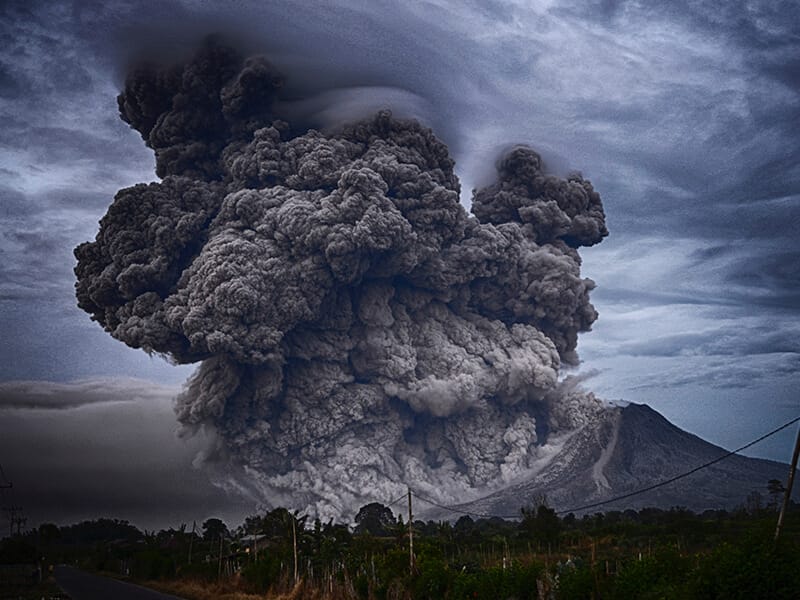
What Are Aromatic Gases?
BTEX compounds are among the most abundantly produced chemicals in the world
Many volatile organic compounds (VOCs) are hazardous to human health, with several classified as carcinogenic i.e. capable of causing cancer in humans. One particular group of VOCs, referred to as aromatic hydrocarbons or simply ‘aromatics’ because of their sweet, pleasant smell are of particular interest because of their widespread use.
Aromatic Gases – What Are They?
Aromatics contain at least one aromatic ring of which benzene is the simplest form
BTEX refers to the chemicals benzene, toluene, ethylbenzene, and xylene. These compounds occur naturally in crude oil and can be found in seawater in the vicinity of natural gas and petroleum deposits. Other natural sources of BTEX compounds include gas emissions from volcanoes and forest fires.
The primary man-made releases of BTEX compounds are through emissions from motor vehicles and aircrafts, as well as cigarette smoke. BTEX compounds are created and used during the processing of petroleum products and during the production of consumer goods such as paints and lacquers, thinners, rubber products, adhesives, inks, cosmetics, and pharmaceutical products.
BTEX compounds are among the most abundantly produced chemicals in the world.
”Aromatics contain at least one aromatic ring of which benzene is the simplest form. Benzene itself forms the basis of the well know group of compounds with the acronym BTEX i.e. Benzene, Toluene, Ethylbenzene and Xylene.
Monitoring BTEX Gases
Many volatile organic compounds (VOCs) are hazardous to human health, with several classified as carcinogenic i.e. capable of causing cancer in humans. One particular group of VOCs, referred to as aromatic hydrocarbons or simply ‘aromatics’ because of their sweet, pleasant smell are of particular interest because of their widespread use.
Detecting Benzene
Benzene (C6H6) is a clear, colorless, and highly flammable liquid with a sweet petrol-like smell. Most people can just detect its distinctive smell at concentrations between 2.5 and 5 parts per million (ppm) in air. Benzene occurs naturally in crude oil and is also found in ambient air as a result of burning fuels, such as coal, petrol, and wood, and is common in unleaded fuel, where it is added as a substitute for lead, allowing smoother running.
Detecting Toluene
Toluene (C7H6), also known as methylbenzene, is a colorless liquid, with a strong, solvent-like smell. Widely used as an industrial feedstock as well as a solvent, toluene is a highly flammable chemical. Toluene is found naturally at low levels in crude oil and is a by-product of the production of petrol (gasoline) as well as the production of coke from coal. Purification is done during a final separation by any distillation or solvent extraction process used for BTEX aromatics.
Detecting Ethylbenzene
Ethylbenzene (C8H10), is a colorless liquid, with a petrol-like aroma. Ethylbenzene is widely used in industrial processes for the manufacture of styrene, one of the most common plastics, which is then used for polystyrene manufacture. Although 99% of ethylbenzene is used in the production of plastics there are other uses for the monocyclic aromatic hydrocarbon, including fuel, a solvent in ink, rubber adhesive, varnish, and paints.
Detecting Xylene
Xylene (C8H10) is the term used to describe the three isomers of dimethyl benzene; m-xylene, p-xylene, and o-xylene. Usually, concentrations of each are added together as total xylenes. Xylene is refined from crude oil and is a clear, greasy liquid.
Download our FREE Guide
“Aromatic Gases – What Are They?”
The aromatic gases-what are they guide which can be downloaded below provides the reader with an in-depth balance of knowledge on aromatic gases and how they affect our every day lives. Like all VOCs, they have a high vapor pressure which means they evaporate (volatilize) at ambient temperature and pressure, which means that they can easily enter the body through normal breathing. As well as inhalation, they can be absorbed into the body through the skin or by swallowing material containing it.

Related Guides
Gas Detection Equipment For Monitoring BTEX gases.
Download your FREE Guide
Simply complete the form below to obtain your FREE Guide on “Aromatic Gases – What Are They?”.
















